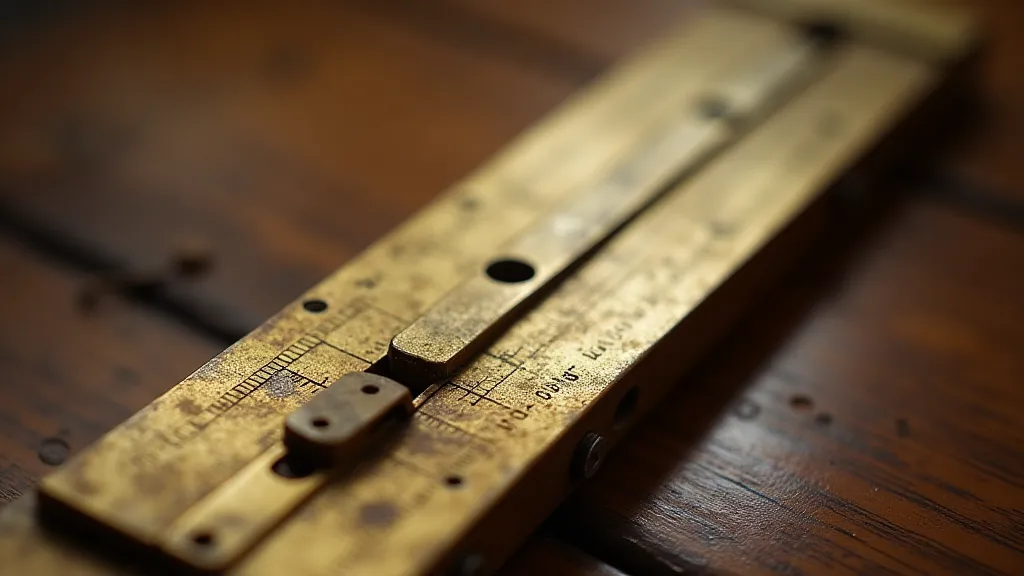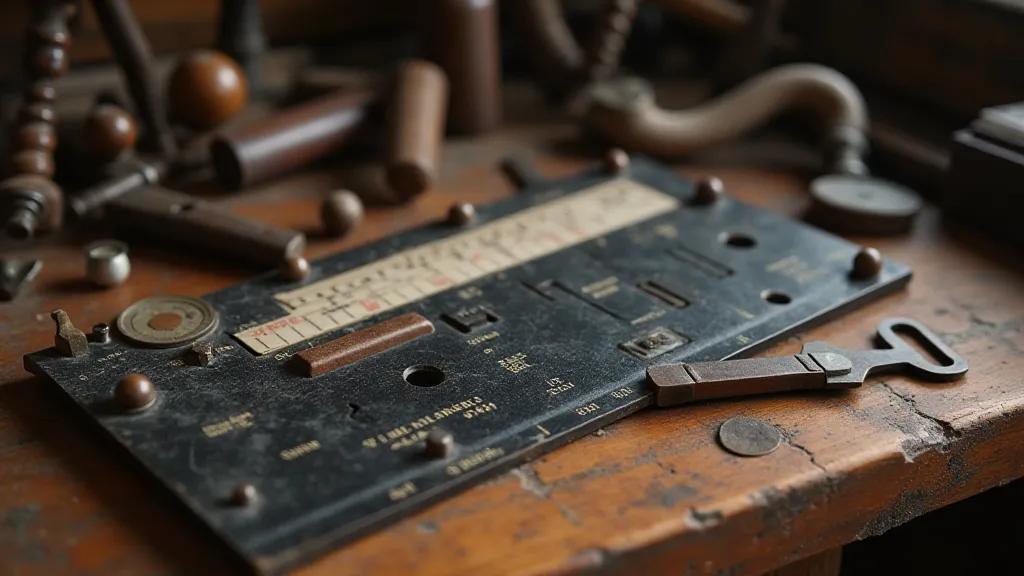Brass & Intuition: The Sensory Experience of Precision
There's a certain reverence that settles over you when you hold a vintage slide rule. It’ - a tangible link to a time when ingenuity and engineering were inextricably bound to the human hand and mind. Today, we’ve traded mechanical calculation for the effortless speed of silicon, but something vital seems to have been lost in the transition – a certain *feel* for the underlying mathematics, a connection to the process that goes beyond simply pressing a button.
For those unfamiliar, a slide rule is an analog computer used for multiplication, division, exponents, roots, trigonometry, and logarithms. It was the primary calculating tool for engineers, scientists, architects, and surveyors for nearly two centuries, from the late 19th to the 1970s. Its reign was absolute, a testament to its versatility and reliability. Its decline was swift, though, eventually yielding to electronic calculators. Many people may feel – and I can certainly attest – that there has been a real loss of the skill that came with the practical application of a slide rule.
My own introduction to the slide rule wasn’t through formal instruction. It was through a practical lesson.

The Language of Brass and Scales
The physical sensation is a crucial part of the slide rule experience. The weight – that reassuring heft of solid brass – grounds you in the task at hand. The cool metal against your fingertips provides a tactile feedback that a digital screen can never replicate. It’s a surprisingly intimate relationship. You aren't just inputting numbers; you’re manipulating a piece of history, engaging in a dance of physical precision. It’s an act that requires a considered approach, and those who embrace this, quickly find enjoyment in the challenge. The history of these tools, and their impact on the professional landscape, could easily fill volumes; it’s a powerful illustration of how seemingly simple objects can shape entire industries, fostering a culture of precision that is often overlooked in our modern, fast-paced world. For those interested in the broader context, exploring the tools that influenced this era, such as those used by the scribes who meticulously documented progress, reveals a fascinating parallel.
The sounds are equally important. The crisp *click* as the slides are aligned, the subtle scraping as they move across the scales – these aren’t just noises; they are auditory confirmations of your calculations, rhythmic markers in the process. They create a feedback loop that hones your understanding and reinforces your accuracy. There’s a meditative quality to the constant, gentle sounds.
Beyond the core functionality, the design itself is a marvel of engineering. The scales, meticulously drawn and calibrated, are a testament to the skill of the craftsmen who produced them. The numbering systems, the spacing, the very layout of the scales – all contribute to the user's ability to navigate and interpret the data. The level of care involved is something often overlooked in our modern, disposable world. Many find this kind of care to be lost in the modern era, and seek it in restoring older technologies.
A Glimpse into the Past: The Rise and Fall
The slide rule’s story is intertwined with the history of scientific and engineering advancement. Its development stemmed from the desire to simplify complex calculations that previously required hours of painstaking work. Early versions, based on logarithms, appeared in the 17th century, but it was the 19th and early 20th centuries that saw their widespread adoption. Companies like Pickett, Eberhard, and Keuffel & Esser became synonymous with quality and precision, each producing a range of models tailored to specific applications.
The slide rule wasn't just a tool; it was a symbol of competence and professional identity. For decades, engineers wouldn't be seen without one strapped to their belts or tucked into their pockets. The ability to quickly and accurately perform calculations with a slide rule was a mark of skill and a prerequisite for many technical professions. It played a crucial role, almost democratizing engineering and putting complex computation within reach of a wider audience. The decline of the slide rule began in the 1960s, with the advent of increasingly affordable and powerful electronic calculators. While initially slow to displace the slide rule completely – many engineers continued to use them well into the 1970s – the calculator's overwhelming speed and convenience ultimately led to its obsolescence. You can almost feel the weight of history, the echoes of countless calculations, held within those brass and ivory scales. The very process highlights how these tools, and others like them, helped to democratize engineering.

Restoration: Preserving a Legacy
Today, vintage slide rules are prized by collectors and those who appreciate the ingenuity of mechanical computation. Many are in need of restoration, having suffered years of wear and tear. Thankfully, the process isn’t overly complicated, but it requires patience and a gentle touch. The most common issues include sticky slides, damaged scales, and tarnished brass. Restoring the tools of the past is a great way to bring a little bit of the past back to the present.
Cleaning is typically the first step. A mild soap and water solution, followed by careful drying, can remove surface grime. For tarnished brass, a specialized metal polish can be used to restore its shine. Sticky slides often require the application of a lubricant, such as silicone spray. Repairing damaged scales is a more challenging task, often requiring the use of specialized markers and transfer techniques. However, even a simple cleaning and lubrication can dramatically improve the functionality and appearance of a vintage slide rule. Sometimes, the precision required for this work demonstrates a level of expertise that is rarely seen these days, showing just how much the world has changed. Imagine the cartographer, painstakingly charting unknown territories, relying on these tools to meticulously measure and record their findings. The accuracy they achieved, despite the limitations of the technology, is a testament to their skill and dedication.
Beyond the purely mechanical restoration, there’s a deeper sense of responsibility. You're not merely fixing a piece of metal and scales; you’re preserving a piece of history, an artifact of a bygone era. You’re ensuring that future generations can appreciate the ingenuity and craftsmanship of those who came before us. You can explore the way numbers are written and represented with examining a slide rules markings, and truly appreciate the legacy that these objects hold.
The Enduring Appeal
While the slide rule may no longer be a practical tool for most calculations, its enduring appeal lies in its sensory experience and its historical significance. Holding one in your hand, manipulating its scales, and hearing the satisfying clicks transports you to a time when engineering was a more tactile and deliberate process. It serves as a potent reminder of the value of human skill, precision, and ingenuity. It’s a tangible link to a legacy of calculation and innovation – a legacy well worth preserving. The beauty of these instruments lies not only in their functionality, but in the quiet dignity of their design and the enduring connection they provide to the past. Perhaps, in a world increasingly dominated by digital abstraction, the tangible grace of a slide rule offers a much-needed connection to the physical world. Many find the process of manipulation itself to be rewarding, allowing you to truly feel connected to the calculations you are preforming. Those with an appreciation for the mechanical process could find a new appreciation by experiencing the flow through analog calculation. It’s a return to a method that demanded not just understanding, but a deep engagement with the underlying principles. This deeper engagement fostered a more intuitive grasp of mathematics, something that's often lost in the instant gratification of digital tools.






